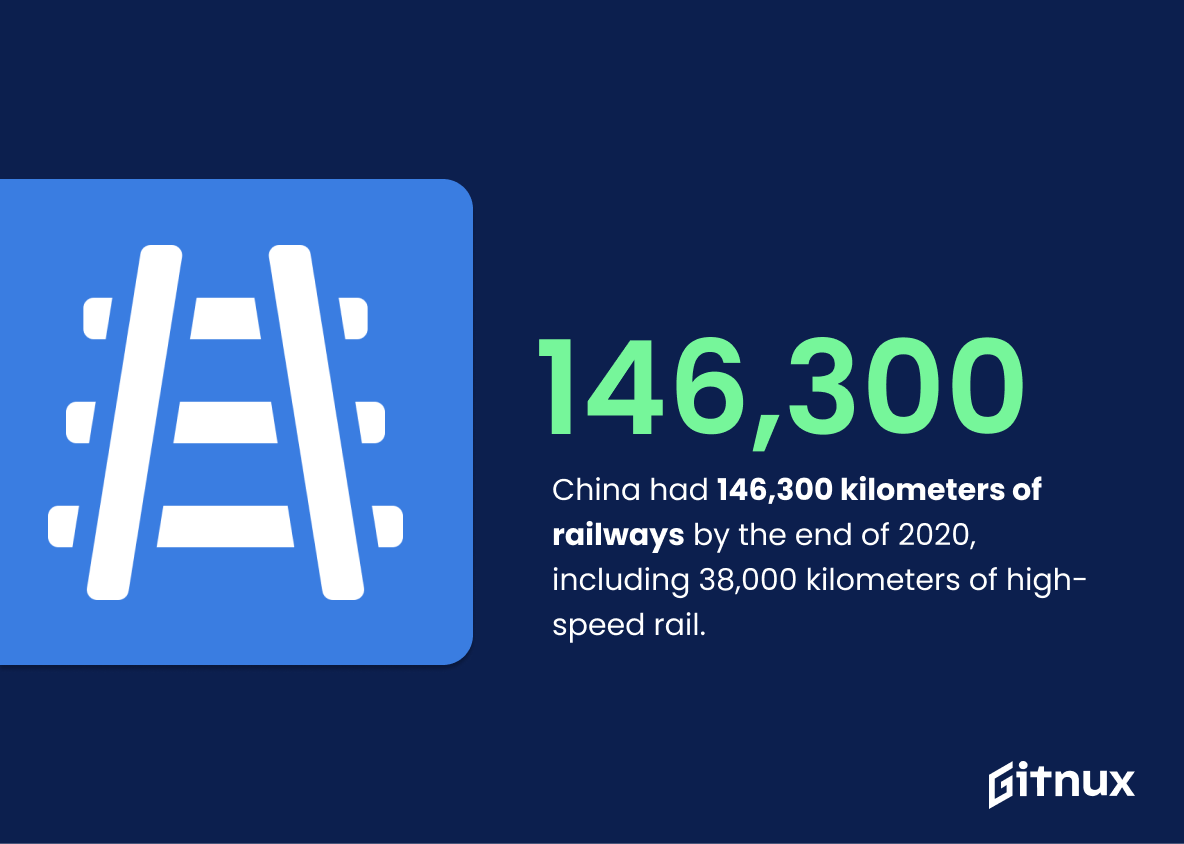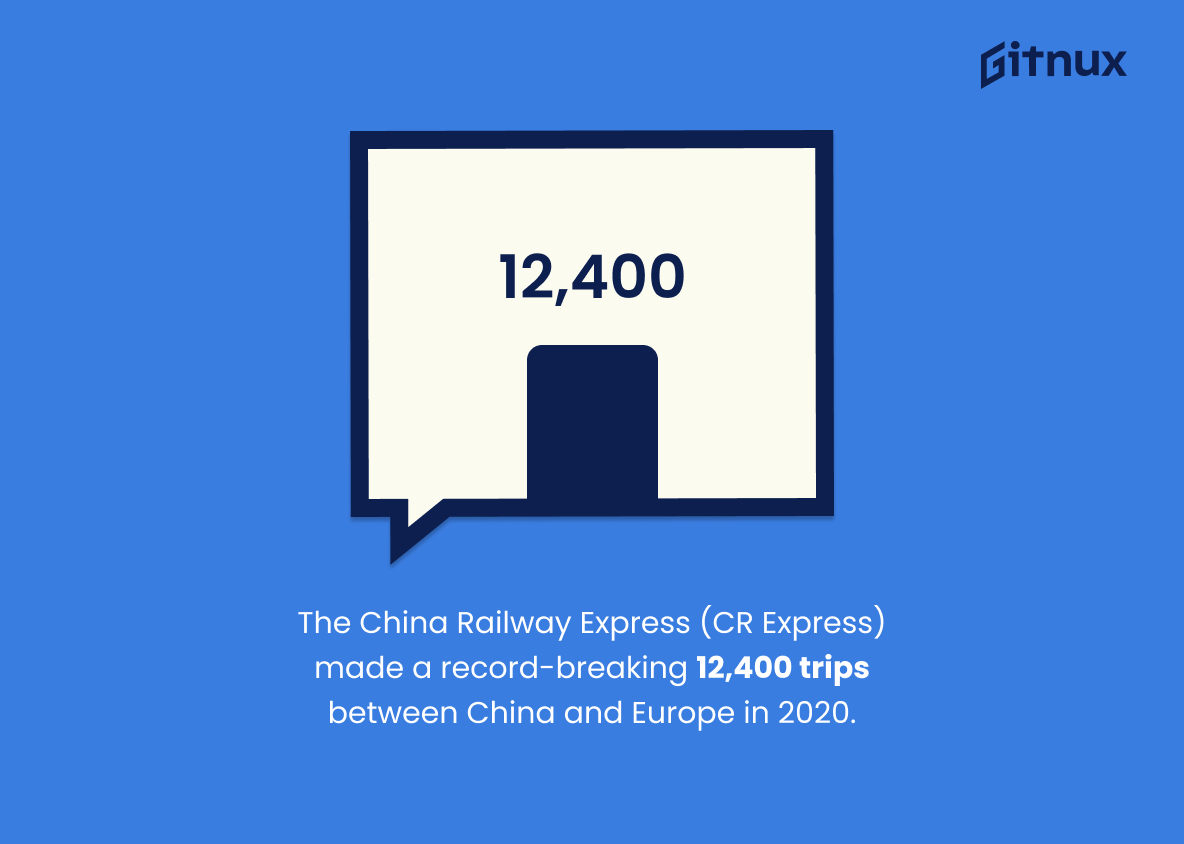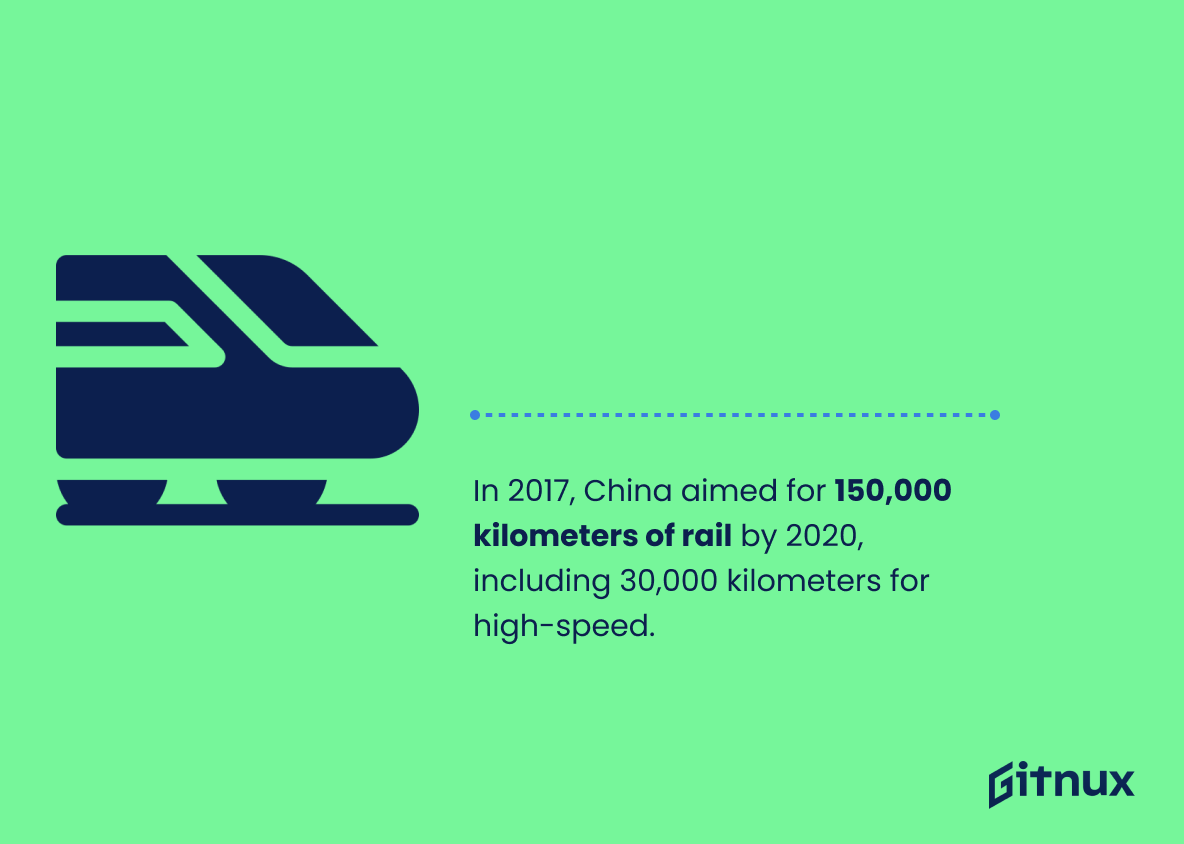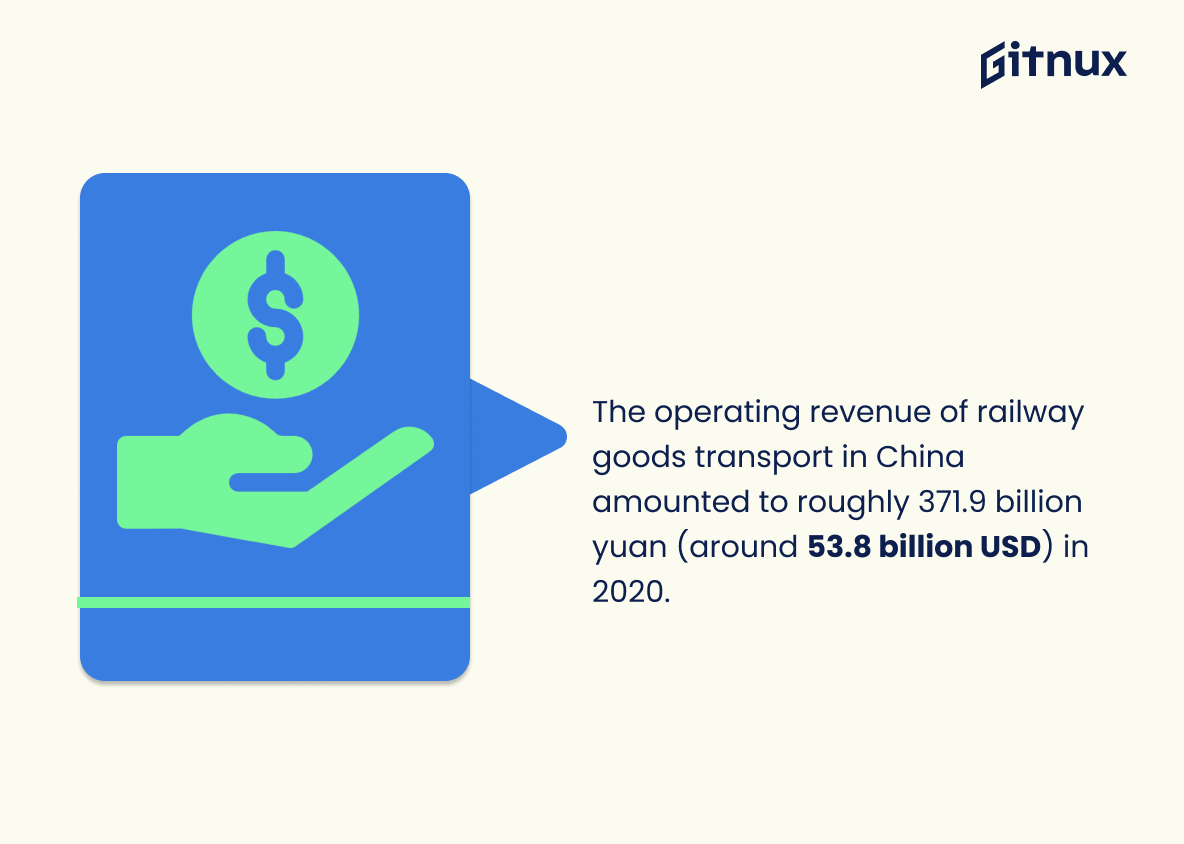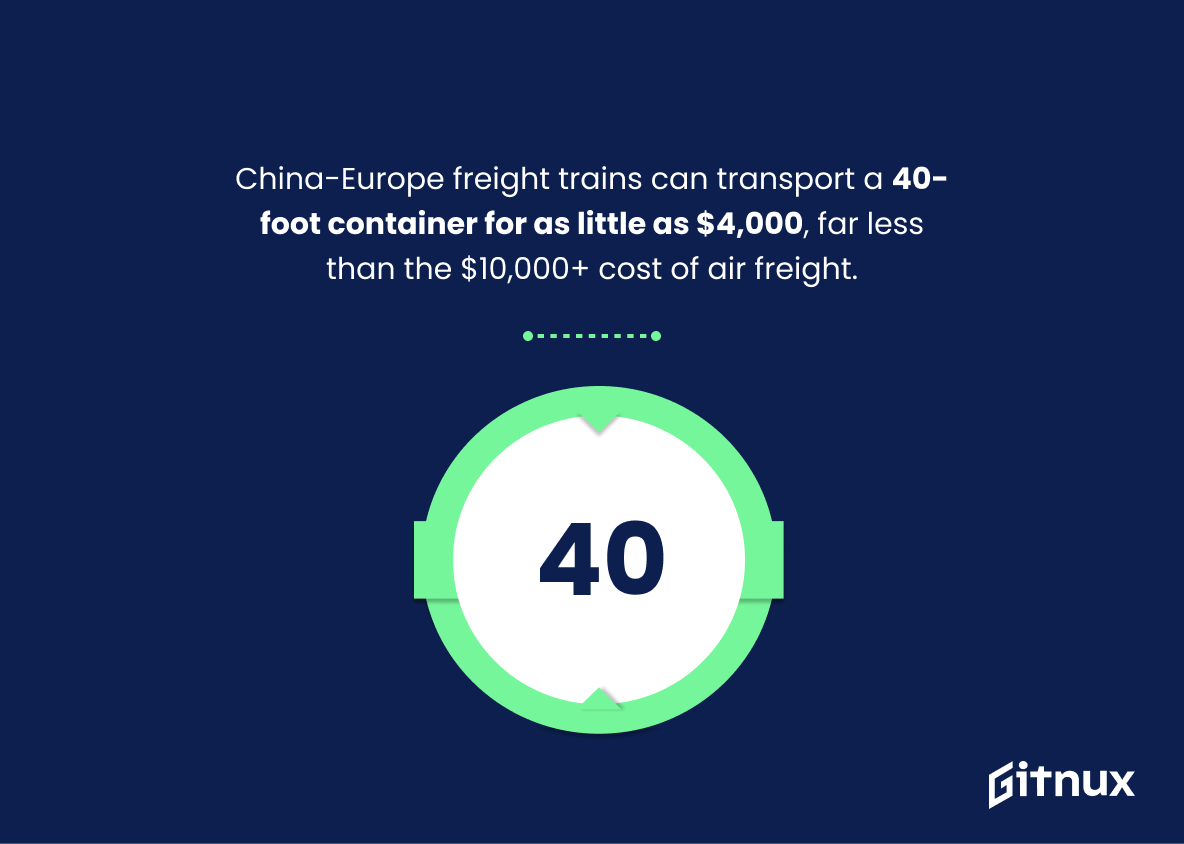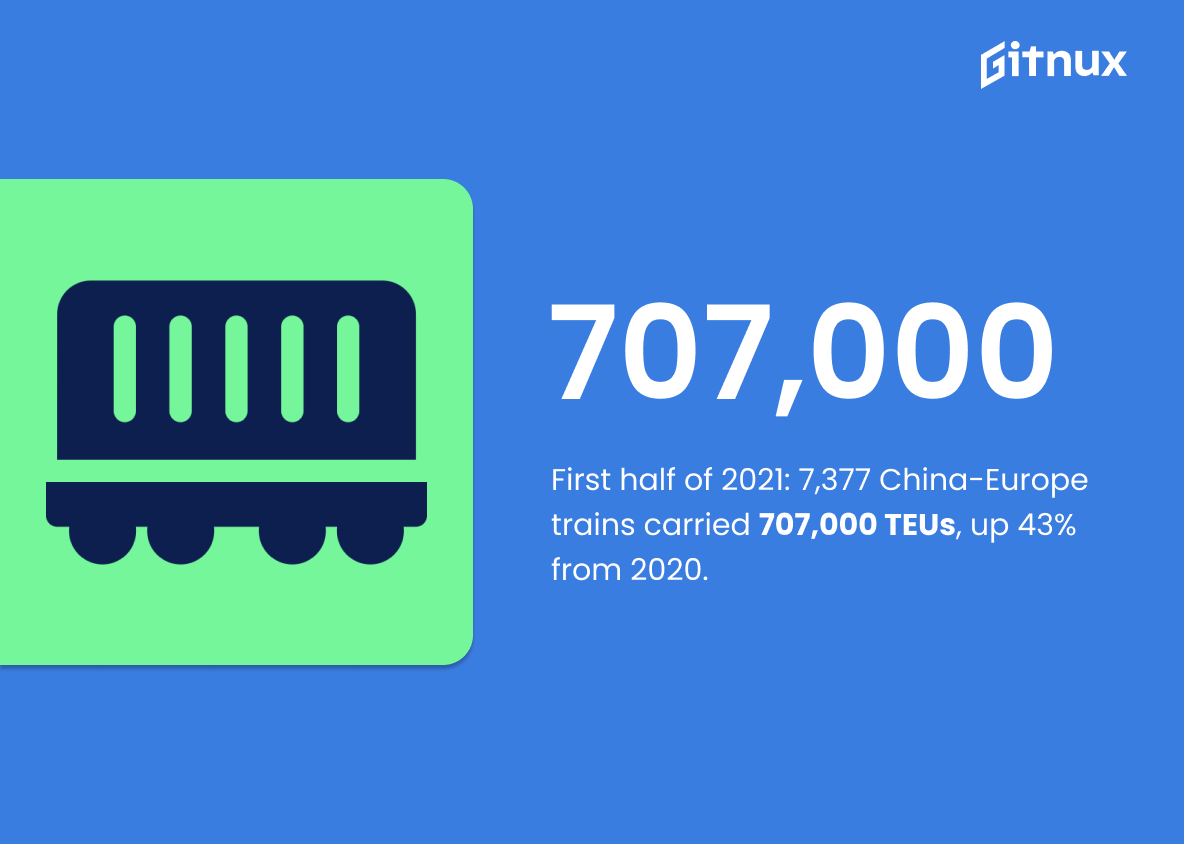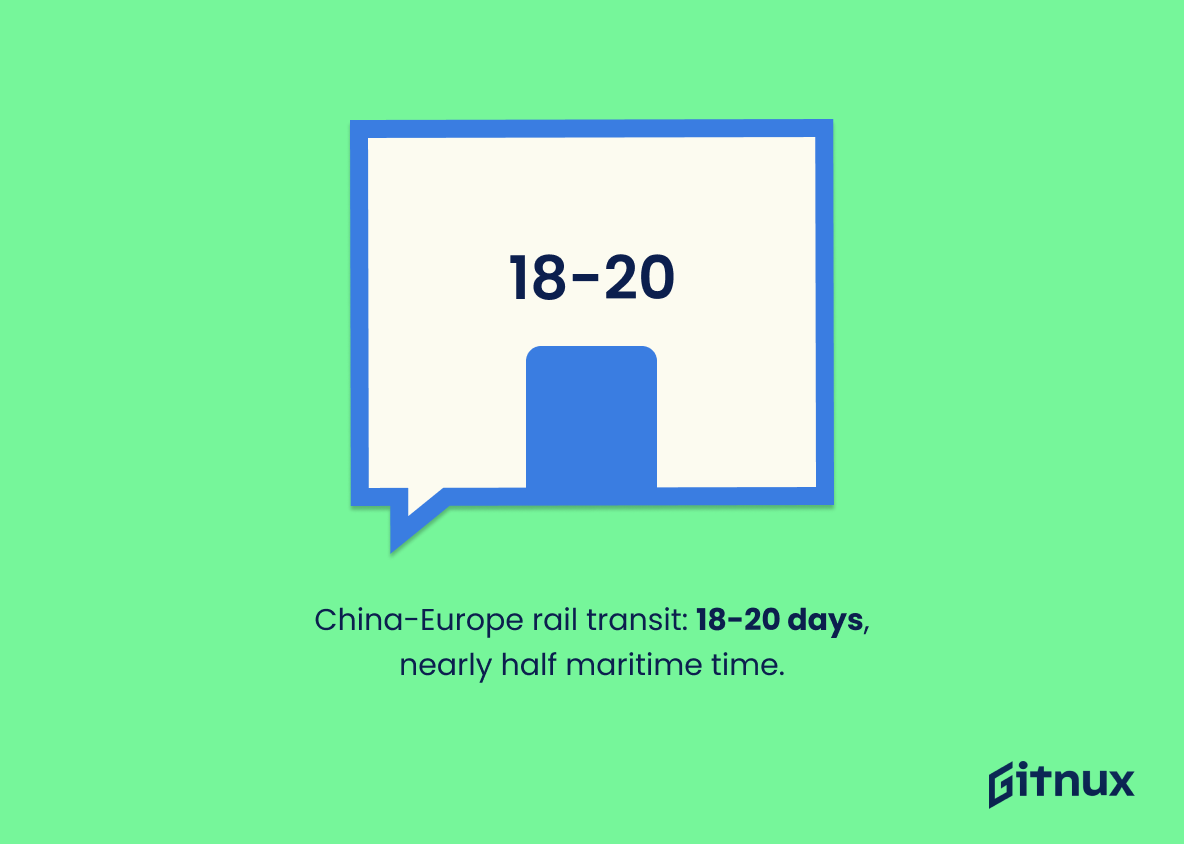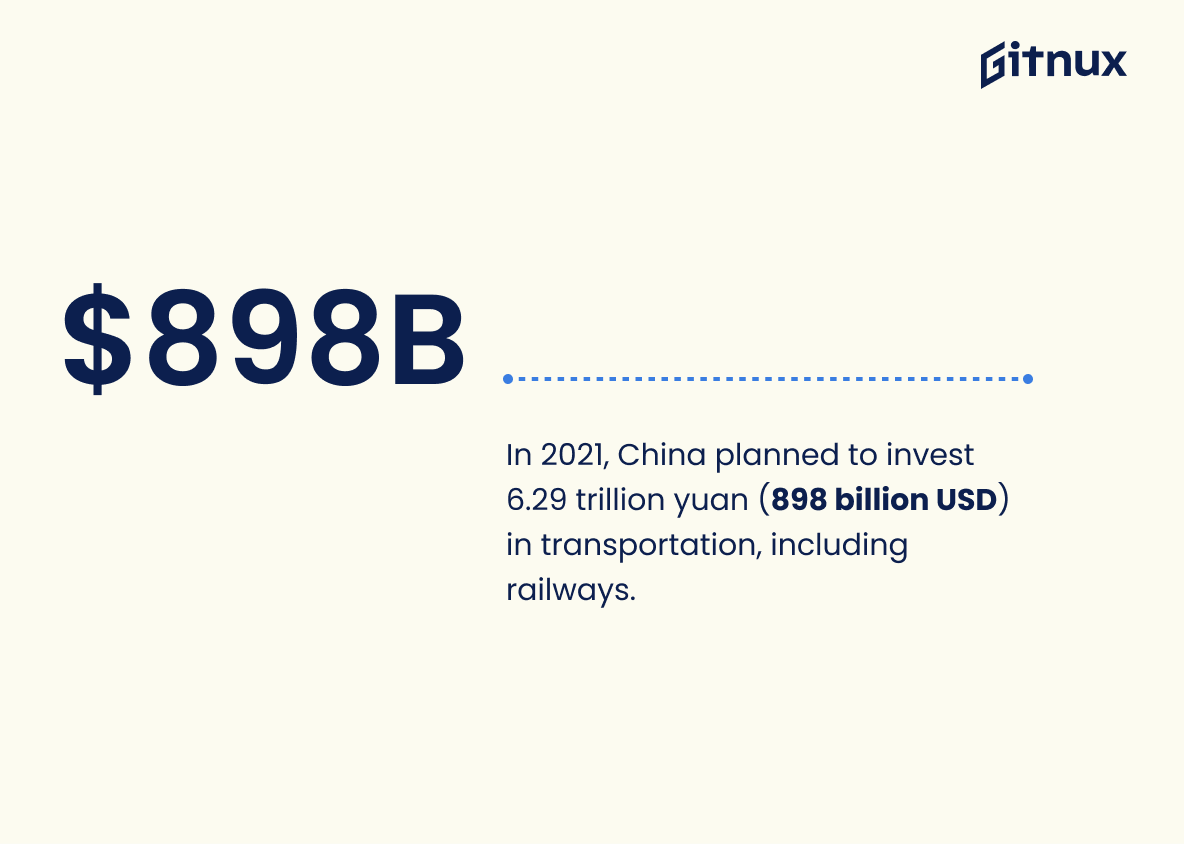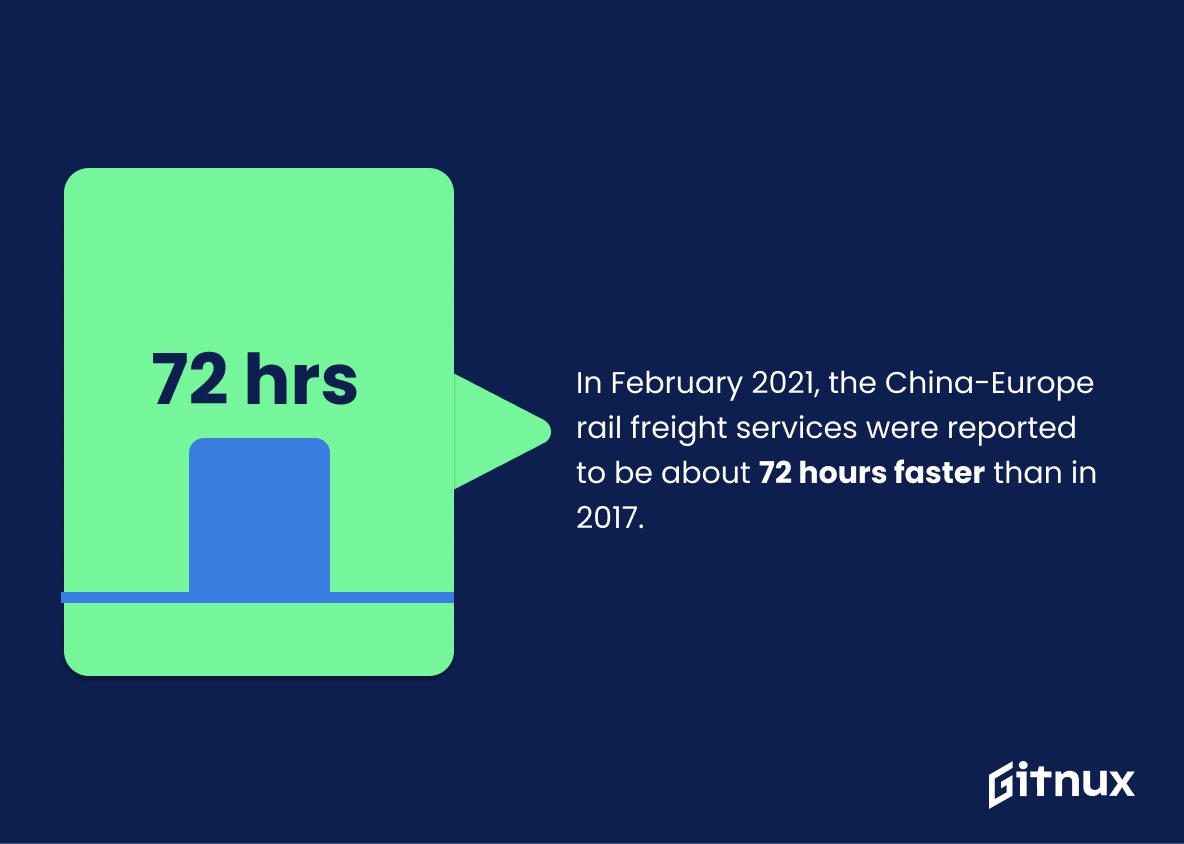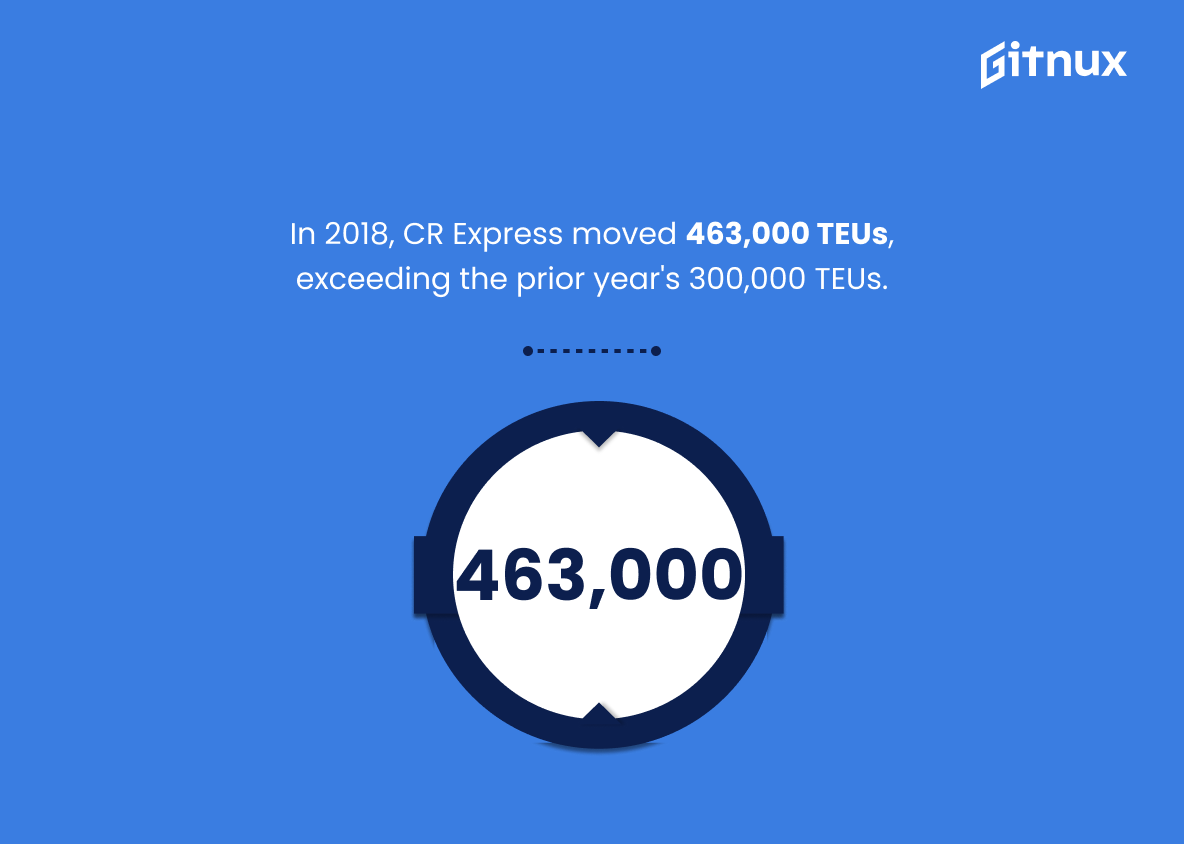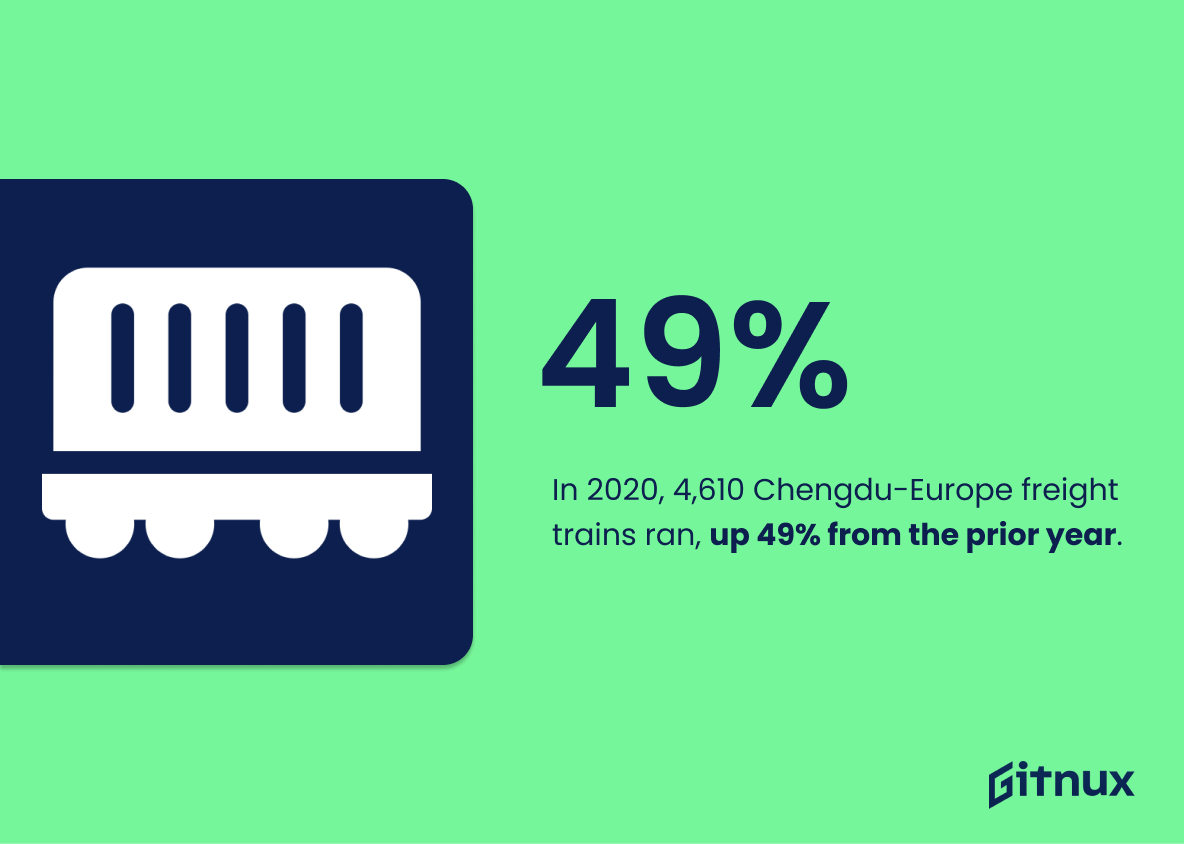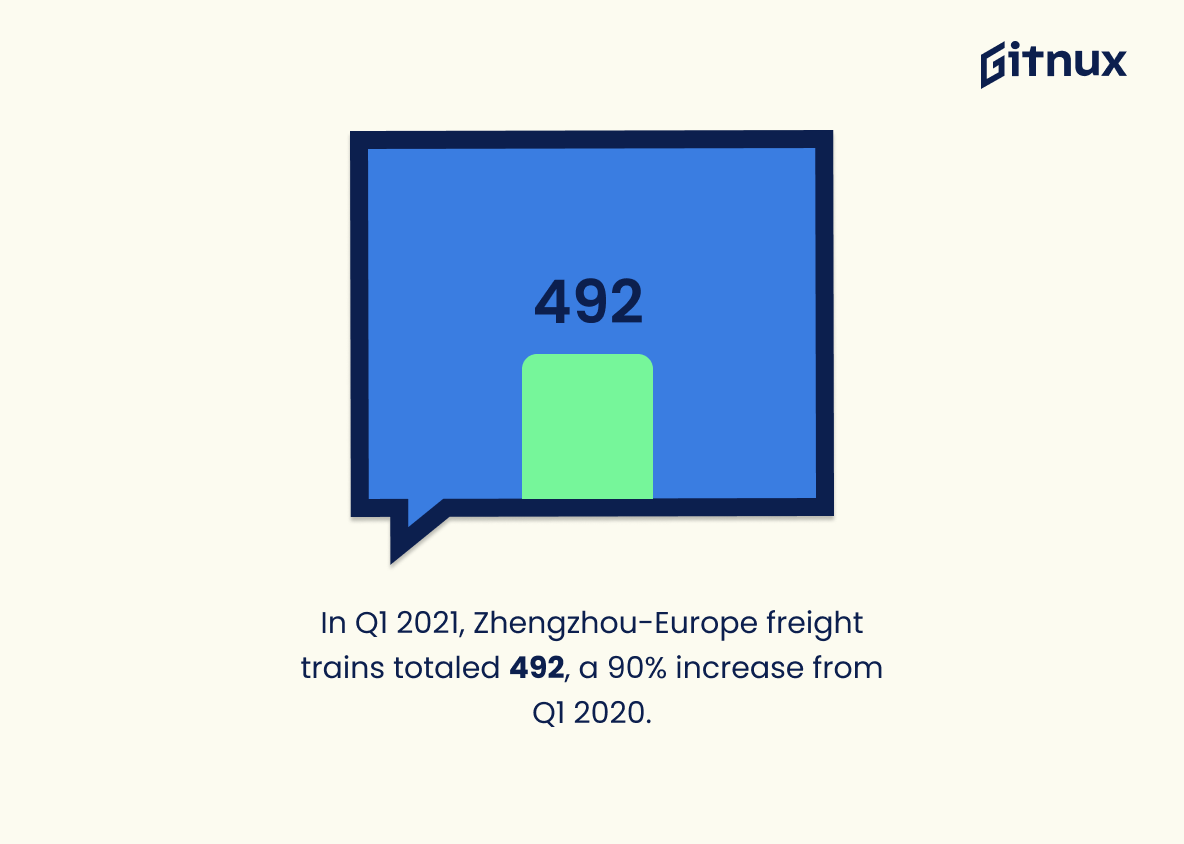China’s rail freight industry has seen remarkable growth in recent years, with the total volume of international rail freight between China and Europe increasing by 50% compared to 2019. The Belt and Road Initiative has also been a major contributor to this growth, having facilitated over 40,000 China-Europe freight train trips since its launch in 2011.
In 2020 alone, 3.58 billion tons of goods were transported via railway within China – an increase of 2.8% year-on-year – while the CR Express made a record 12,400 trips between China and Europe that same year. Furthermore, the average transit time for these journeys was reduced from 36 days in 2017 to 18–20 days by 2020 due to improved infrastructure investments such as high speed rails covering 38 thousand kilometers across the country’s 146 thousand kilometer network length at end of last year .
The cost savings associated with using railways instead air or maritime transport have further incentivized companies looking for efficient transportation solutions; transporting one forty foot container on a Chinese European Freight Train can be as low as $4 000 compared to more than double that amount when sent through air cargo services .
Overall it is clear that investment into railway networks both domestically and internationally are paying off significantly , resulting not only increased efficiency but also higher volumes being shipped each day – 707 000 TEUs during first half 2021 alone.
This statistic is a testament to the remarkable growth of China-Europe rail freight in 2020. It demonstrates the immense potential of this transportation method, as it experienced a 50% increase in volume compared to the previous year. This is a clear indication that China-Europe rail freight is becoming an increasingly popular option for businesses looking to transport goods between the two regions. As such, this statistic is an important piece of information for anyone interested in learning more about the current state of China Rail Freight Statistics.
In the first quarter of 2021, China-Europe rail freight saw a notable 75% increase compared to the same period in 2020.
This statistic is a testament to the remarkable growth of China-Europe rail freight in the first quarter of 2021. It demonstrates the increasing popularity of this mode of transportation, as well as its potential to become a major player in the global freight market. This data point is an important indicator of the success of China’s rail freight industry, and provides insight into the future of the sector.
China Rail Freight Statistics Overview
The length of China’s railway network reached 146,300 kilometers by the end of 2020, with over 38,000 kilometers of the network being high-speed rail.
This statistic is a testament to the impressive growth of China’s railway network, particularly in terms of high-speed rail. It highlights the country’s commitment to modernizing its infrastructure and improving its rail freight capabilities. This is especially important in the context of China Rail Freight Statistics, as it provides a valuable insight into the current state of the country’s rail freight industry.
The China Railway Express (CR Express) made a record-breaking 12,400 trips between China and Europe in 2020.
The record-breaking 12,400 trips made by the China Railway Express (CR Express) in 2020 is a testament to the increasing importance of China Rail Freight Statistics. This impressive number of trips highlights the growing demand for rail freight services between China and Europe, and the success of the CR Express in meeting that demand. It is a clear indication that China Rail Freight Statistics are becoming increasingly important in the global economy.
In 2017, the Chinese government set a target of creating 150,000 kilometers of rail networks by 2020, with 30,000 kilometers being dedicated to high-speed rail.
This statistic is of paramount importance when discussing China Rail Freight Statistics, as it provides a benchmark for the progress of the Chinese rail network. It serves as a reminder of the ambitious goals set by the Chinese government, and the potential for growth in the rail freight industry. With 30,000 kilometers of high-speed rail, the Chinese rail network is poised to become one of the most efficient and reliable in the world, and the freight industry stands to benefit greatly from this.
The operating revenue of railway goods transport in China amounted to roughly 371.9 billion yuan (around 53.8 billion USD) in 2020.
This statistic is a powerful indicator of the success of China’s railway goods transport industry. It shows that despite the economic downturn caused by the pandemic, the sector has managed to remain profitable and continue to grow. This is a testament to the efficiency and reliability of China’s railway system, and provides a valuable insight into the country’s economic health. As such, this statistic is an essential part of any discussion about China Rail Freight Statistics.
The cost for transporting a 40-foot container between China and Europe on a China-Europe freight train can be as low as $4,000, compared to $10,000 or more via air freight.
This statistic is a testament to the cost-effectiveness of China-Europe freight trains. It demonstrates that, compared to air freight, transporting a 40-foot container between China and Europe via rail is significantly cheaper. This is an important point to consider when discussing China Rail Freight Statistics, as it highlights the potential savings that can be made by opting for rail freight over air freight.
In the first half of 2021, around 7,377 China-Europe freight trains carried about 707,000 twenty-foot equivalent units (TEUs), a 43% increase over the same period in 2020.
This statistic is a powerful indicator of the success of China’s rail freight system in the first half of 2021. It shows that the number of China-Europe freight trains has increased significantly, with a 43% increase in TEUs compared to the same period in 2020. This is a clear indication that the system is becoming more efficient and reliable, and that it is becoming an increasingly important part of the global supply chain. This statistic is an important piece of evidence for anyone looking to understand the current state of China’s rail freight system and its potential for future growth.
The average transit time for China-Europe rail freight is 18-20 days, which is almost half the time compared to maritime transport.
This statistic is a testament to the efficiency of China-Europe rail freight, demonstrating that it is almost twice as fast as maritime transport. This is an important factor to consider when discussing China Rail Freight Statistics, as it highlights the potential for businesses to reduce their delivery times and increase their customer satisfaction.
In 2021, China intends to invest around 6.29 trillion yuan (about 898 billion USD) in transportation infrastructure, including investment in railway construction.
This statistic is a clear indication of the Chinese government’s commitment to investing in railway construction, which is essential for the development of the country’s rail freight industry. It shows that the government is taking the necessary steps to ensure that the rail freight industry is able to meet the demands of the growing economy. This investment will help to improve the efficiency of the rail freight system, allowing for faster and more reliable transportation of goods. Furthermore, it will also create jobs and stimulate economic growth in the region.
In February 2021, the China-Europe rail freight services were reported to be about 72 hours faster than in 2017.
This statistic is a testament to the remarkable progress that has been made in China-Europe rail freight services over the past few years. It highlights the efficiency and speed of the services, which is a major factor in the success of the rail freight industry. This statistic is a clear indication that China is committed to providing reliable and efficient rail freight services to its customers, and that the industry is continuing to grow and improve.
In 2018, the CR Express transported 463,000 TEUs in freight between China and Europe, surpassing the previous year’s figure of 300,000 TEUs.
This statistic is a testament to the success of the CR Express in transporting freight between China and Europe. It shows that the service has grown significantly in the past year, with a 54% increase in the number of TEUs transported. This is a clear indication that the CR Express is becoming an increasingly popular choice for freight transportation between the two regions.
In 2020, around 4,610 freight trains traveled between Chengdu, China, and Europe, representing a 49% increase compared to the previous year.
This statistic is a testament to the growing importance of China Rail Freight in the global economy. The 49% increase in freight trains traveling between Chengdu, China, and Europe in 2020 is indicative of the increasing demand for Chinese goods and services in the European market. This statistic is a clear indication of the success of China Rail Freight in connecting the two regions and facilitating the exchange of goods and services.
In the first three months of 2021, the number of freight trains making the journey between Zhengzhou, China, and Europe reached 492, up by 90% compared to the same period in 2020.
This statistic is a powerful indicator of the remarkable growth of China Rail Freight in the first three months of 2021. It shows that the number of freight trains making the journey between Zhengzhou, China, and Europe has increased by a staggering 90%, compared to the same period in 2020. This is a clear sign that China Rail Freight is becoming an increasingly important part of the global transportation network.
Conclusion
The data presented in this blog post paints a clear picture of the growth and development of China’s rail freight industry. In 2020, total volume of international rail freight between China and Europe increased by 50%, while the number of CR Express trips made a record-breaking 12,400 journeys. The length of railway networks also saw an impressive expansion to 146,300 kilometers with 38,000 kilometers dedicated to high-speed rails. Furthermore, investment in transportation infrastructure is expected to reach 898 billion USD from 2021 – 2025 which will further boost the efficiency and capacity for transporting goods via railways. All these statistics demonstrate that despite facing challenges due to COVID-19 pandemic last year, China has managed to maintain its position as one of the leading countries when it comes to developing efficient railway systems for cargo transport both domestically and internationally.
References
0. – https://www.gbtimes.com
1. – https://www.thediplomat.com
2. – https://www.statista.com
3. – https://www.globaltimes.cn
4. – https://www.railfreight.com
5. – https://www.brookings.edu
6. – https://www.railtech.com
7. – https://www.bifa.org
8. – https://www.cnbc.com
9. – https://www.chinadaily.com.cn
10. – https://www.joc.com
